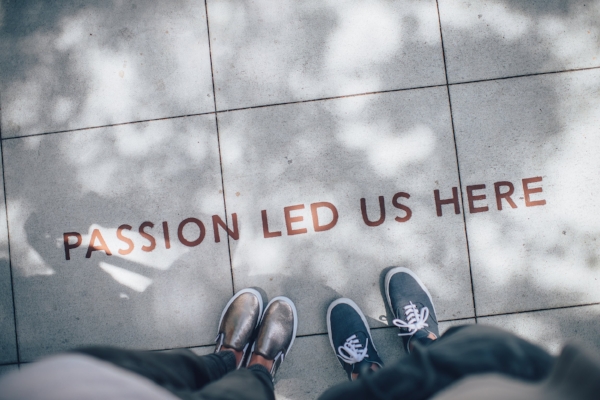A 5-Step Guide to Goal Setting with Lorie Corcuera
/Ah, 2018. A new year, a clean slate, and a fresh start, right? Maybe you’ve taken these sentiments to heart and are a month into your new fitness regime or weekly meal preps. But if you are anything like me, your 2017 habits have somehow snuck into your 2018 frame of mind and daily routine.
2017 was a year of realization for me. These realizations were both good and bad and they have impacted my start to 2018 because they are always on my mind. I am at the point in my life (cue quarter life crisis) where the roadmap no longer exists. I’ve finished school, I’ve gotten my degree, I have a full-time job, I opened a TFSA. But I am so unsure about my future ahead. I don’t know what my passion is or my purpose and I often feel like I’m just waiting for something to happen. It’s a difficult feeling and one that has left me extremely confused.
This confusion has led me to goal set. By setting goals I have defined my own personal roadmap. A roadmap that takes a look at the greater picture of what I hope to achieve in the next 5 to 10 years and helps me imagine where I want to be. I might not be there right now, but goal setting gives me the hope, inspiration and a few attainable ideas on how actually get there.
So when Lorie Corcuera, Co-Founder and CEO of SPARK Creations, spoke about goal setting at the YWiB Vancouver Mentorship Launch event, I jumped on the opportunity to sit down with her and pick her brain about goal setting.
Post-chat selfie with Lorie!
One of the first questions I asked Lorie was what the difference between an intention and a goal was. As a self-proclaimed at-home yogi, I hear the word intention a lot, but rarely in the context of goal setting. According to Lorie, an intention is the why behind your goals – it is how you want to be and how you want to feel. This word or statement should encompass your vision and your values and it should fuel your goals. The tangible, measurable steps that allow you to reach your intentions, those are your goals.
A simple concept really – so, I ask you, what is your why?
One method that Lorie uses that helps to understand your intention is choosing a theme word for your year ahead. This theme word should encompass how you want to frame your goals for the year. My theme word this year is discovery. I want to discover what my passion is, I want to discover what things make me happy and sad, and I want to discover what my next step is. How I am going to achieve these things that is where goal setting comes in.
During our chat, Lorie explained 5 factors that she considers when she is setting goals and intentions for the year.
Yes, I know it’s already February and you have probably closed the book on 2017, but I encourage you to open that book up one last time and examine it.
Ask yourself:
- What was last year about for you?
- What went well?
- What didn’t go well?
- What was the biggest takeaway from your year?
- What can I learn from?
It’s important to take the time to truly reflect and acknowledge all the good and bad things from last year. This will help stimulate ideas and highlight areas in which you want to focus your time and energy on for the new year ahead.
It’s very easy to get caught up in moving forward and checking things off of your list but start with identifying what you actually like about right now. Take a look at your current situation and examine what is good about it before making adjustments. Bringing a sense of gratitude to your current and past experiences will help you understand what you can grow on and even require in the new year ahead.
Identify what is important to you and what you care about. Values describe who you are. Take the time to identify your core values and make sure your goals are aligned with them. When goal setting, be sure to ask yourself, “have my values changed since last year?”
If you haven’t done so already, identify what you genuinely want from life and make sure every goal you make leads you towards this purpose. I know, it is a loaded concept…
According to Lorie, purpose describes your why - why you get up every morning, why you exist on this Earth.
To help define your purpose, ask yourself:
- What impact do you want to make in the world?
- How do you want to be remembered?
- What value or contribution do you want to create and for who?
Lorie recommends Simon Sinek’s books, Start With Why and Find Your Why. Using resources like this can help you better understand what mark you want to leave on the world and lead you one step closer to discovering your purpose.
Be clear on where you want to be and where you want to go in your life. Lorie mentioned that it is helpful to develop a vision statement or write down a couple of sentences to make your vision clear and to truly solidify it for yourself.
Tools and Strategies for Goal Setting
So, with these considerations in mind here are some tools and strategies to assist with the goal setting process:
Visualization – a technique used to get your mind to think of your vision in images. Use your imagination to visualize yourself achieving your goals. Think in as much detail as you can to help create this image in your brain. An example Lorie provided is an athlete could visualize themselves at the Olympics winning a gold medal and celebrating with their team.
Vision Story – write a story from a future point in your life. Explain what you’ve accomplished in past or present tense. Be as descriptive as possible and use all 5 senses. Create this story as if your goals have already been achieved!
Vision Board – a visual tool that uses images and words to give you that feeling of purpose and showcases your goals in a visual format. Make sure to include your theme word and purpose on your vision board. A great tip that Lorie gave was to make your vision board digital so that you have it with you all the time, whether on your phone or you computer. This way it is easily accessible and becomes more ingrained and top of mind in your daily life. Use tools like Canvas.com, PowerPoint, or Pinterest to develop your vision board.
For those who are more analytical:
Create a spreadsheet – write down your goals with a timeline and check each goal as they are achieved, maybe even give yourself a gold star ;)
Productivity or Habit Apps – input your goals into an app like Strides Habit Tracker or Productive and track your progress!
Final Words of Wisdom
How many of you have written goals but never check in on them? I do this ALL the time and Lorie suggests creating an accountability group. Surround yourself with like-minded, goal-oriented people and share your goals with each other. Set up times to meet on a regular basis to discuss your progress and stay accountable for your actions
Don’t forget - completing your goals is a gradual journey. It takes time and it happens slowly. But if you are considering setting goals, you have taken the first step in the right direction and it is never too late to start!
Gaby Rice is the Newsletter Editor for YWiB Vancouver. She has worked in a number of customer service, project management, and people management roles in the tourism and hospitality industry. Gaby is passionate about travel, writing, and helping others achieve their goals.








